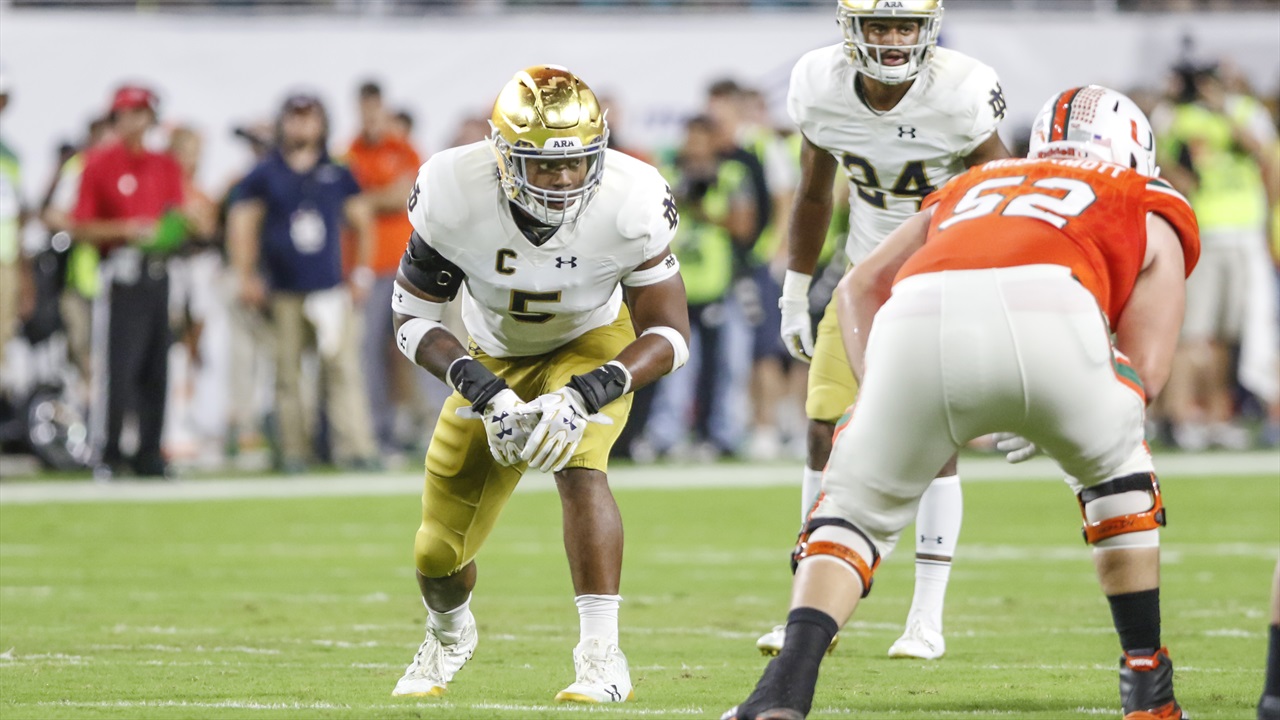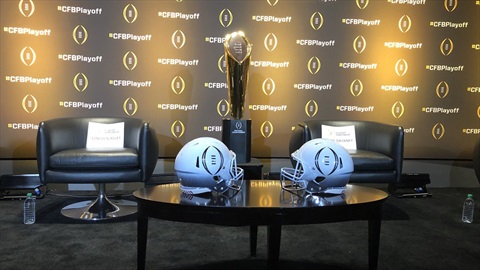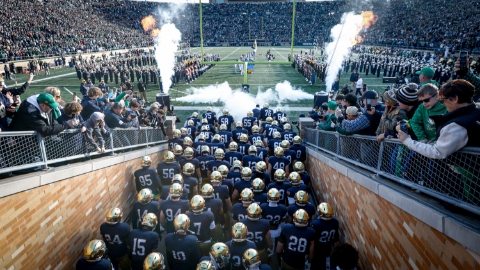
Notre Dame signed 75 4 or 5 -star recruits between the 2010-2015 recruiting cycles (excluding Eddie Vanderdoes and Matt James). 25, ⅓ of the blue-chips they’ve added to the roster, were from the Midwest.
The region is supposed to be the foundation for Notre Dame recruiting, but as I mentioned last week in 6 Thoughts, things have been trending away from that. The staff is sending out more offers out than ever before. The majority of them have been from areas outside of the Midwestern states. Seeing some results from some recent blue-chip prospects from there makes it pretty obvious why that’s been the case.
Very few of the prospects they have signed from the Midwest have become great players. To be frank, only a few of them have even become good players for the Irish. Some players still have eligibility left and can get to a higher level, but even if those players do, the hit rate for the blue-chips from the Midwest still won’t look great.
Just like I did last week looking at Top-100 recruits Notre Dame has signed, I split them into four different categories.
Home runs are great players that are All-American caliber. Doubles are good players that were quality starters for multiple seasons. Singles are contributors that made a positive impact on the field. Strikeouts are players who either never played or have not made an impact while playing.
Not everyone can be a home run, but the majority of blue-chip recruits are expected to at least be doubles. There aren’t enough of them in this group.
Home runs: Sheldon Day (2012), Jaylon Smith (2013)
It’s impossible not to be excited about how these two turned out. There aren’t many in-state prospects who had the kind of potential that these two had and both were great players for the Irish.
Doubles: Christian Lombard (2010), James Onwualu (2013), Nyles Morgan (2014), Drue Tranquill (2014), Deshone Kizer (2014)
Lombard is probably a borderline player due to injuries shortening his career, but he was a tough run-blocker that was solid at tackle and guard in 2012 and 2013 even with his back problems.
Onwualu’s senior season was overshadowed by the poor play from the team. He was one of the lone bright spots on defense and filled a valuable role at Sam linebacker when the Irish did not have many other options from 2014-2016.
Morgan may have underachieved given his lofty ranking as a recruit, but he gave Notre Dame two quality years at Mike linebacker. He wasn’t great. He was good, though.
Kizer was probably the best quarterback during Brian Kelly's time at Notre Dame.
Tranquill is someone who has a chance to be a home run with him coming back for his fifth year. He was outstanding last season at Rover.
Singles: DaVaris Daniels (2011), Malik Zaire (2013), Steve Elmer (2013), Daniel Cage (2014), Nic Weishar (2014), Shaun Crawford (2015), Miles Boykin (2015),
When you think of players who flashed, this is a typically a good category for them. Lack of consistency is why most are here. So players like Daniels and Elmer, who started a number of games at Notre Dame, are in here because they rarely had sustained success. At least not enough for me to have them be considered good to great players for the Irish.
Crawford, Wimbush, and Boykin all have two years of eligibility left. It’s not out of the question that all three could end up being good or even great players given what they have shown on the field so far. I’m sure Notre Dame fans are hoping that it will go down that way.
Strikeouts: Alex Welch (2010), Andrew Hendrix (2010), Eilar Hardy (2011), Will Mahone (2012), Gunner Kiel (2012), Colin McGovern (2013), Justin Brent (2014), Jimmy Byrne (2014), Josh Barajas (2015), Asmar Bilal (2015), Elijah Taylor (2015)
That's 10 players who were strikeouts. Bilal, another player with two years of eligibility remaining, is the only player who has a chance to change that as everyone else has left the program.
As it stands right now, to only have 7 out of 25 (28%) is incredibly disappointing. If players from the Midwest are supposed to be the foundation for Notre Dame’s roster, you can understand why Brian Kelly has had some shaky years. Even if Crawford, Boykin, and Bilal end up as doubles or better, that’s still 10 for 25 (40%) out of the group as a whole.
These are players who had all been to campus numerous times before signing when during the recruiting process. It would make sense that these players would be the ones that the coaching staff would have been most familiar with before they get to Notre Dame. And yet, the hit rate is what it is with these Midwest recruits.
That’s partly a reflection of evaluation and development by Notre Dame. However, it may also be a reflection of the recent talent in the Midwest in general.
Comparing vs Ohio State and Michigan
Ohio State and Michigan are the other two power programs from the Midwest. They recruit nationally like the Irish do, but have relied on players from the region even more so than Notre Dame. Ohio State especially has done that with their influence in the Buckeye state.
They have signed 56 4 or 5-star prospects from the Midwest between ‘10 and ‘15. That’s obviously a lot more than Notre Dame has so that certainly helps them with the overall players who have hit big.
10 of those would fall into the category of home run and another 12 would be doubles (39.2%). They have had more swings, but the rate at which they have hit on blue-chips is much higher. They have some like linebacker Justin Hilliard and defensive lineman Jashon Cornell that may still become doubles or home runs too.
Since I’m sure someone will ask how many of those home runs were 5-star/top-50 recruits, the answer is 3. They’ve had players from the Midwest become home runs at Ohio State like cornerback Denzel Ward (270th overall), cornerback Garreon Conley (153), and offensive lineman Billy Price (211). Not all of them were 5 star can’t-miss prospects.
Michigan did not recruit as well during those years as Ohio State, partially because that was Brady Hoke and Rich Rodriguez during that time. They did sign 40 blue-chip prospects from the Midwest over those six cycles, though.
The hit rate ended up being close to Ohio State, although with a big difference in home runs. They had 2 in that category and 14 of what I would classify as doubles (40%). That’s 16 out of 40 (40%).
Like I said, that’s close to the same percentage of Ohio State. I’m sure that’s not what either want, but it’s better than what Notre Dame has done.
Is that 40% mark about the average for all 4 and 5-star prospects at most schools or is that lower because of the region? That I don’t know and I hope to learn more about it while diving deeper into this. What I do know is that Notre Dame hasn’t had the success with blue-chip prospects from the Midwest that they would like to. The reasoning is different with each individual, but when it’s all combined together, it adds up to a large amount of disappointment.



